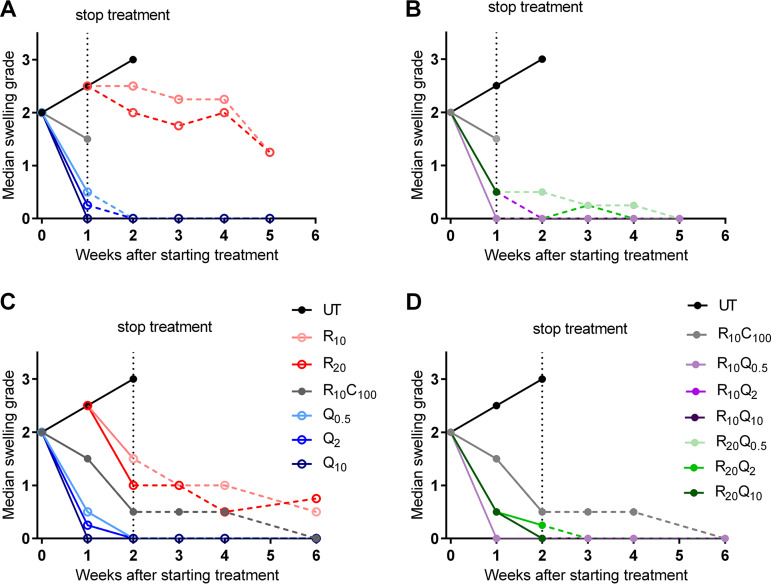FIG 4.
Footpad swelling grade of infected mouse footpads in response to treatment in study 2. Treatment was initiated 6 weeks after infection when the median swelling grade approached 2. Data points represent medians per treatment group. (A and B) Swelling results in mice treated for 1 week. (C and D) Swelling results in mice treated for 2 weeks. Monotherapy groups are shown in panels A and C, while combination treatment groups are shown in panels B and D. R10C100 is the standard treatment control. Solid lines represent change in footpad swelling during treatment, while that after stopping treatment is shown by dashed lines. All Q203-containing regimens reduced footpad swelling after just 1 week of treatment and continued to show response after stopping treatment. Most footpads were at baseline levels after 2 to 3 weeks. RIF alone produced a slight decline in swelling after peaking at 1 week. The footpads never reached a median grade of 1 after 4 weeks of follow-up. As with 1 week of treatment, 2 weeks of Q203-containing regimens rapidly rendered footpads swelling free. In comparison, the RC-treated controls showed gradual decreases in footpad swelling. Numbers in subscripts after drugs indicate doses in mg/kg. D, day; UT, untreated; R, rifampin; C, clarithromycin; Q, Q203/Telacebec.

